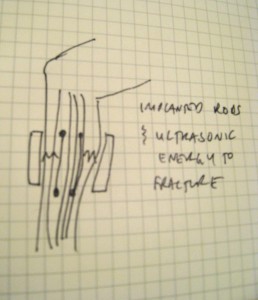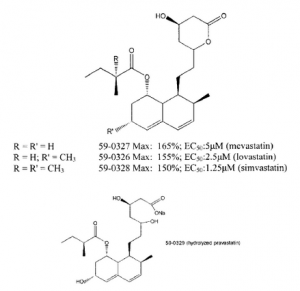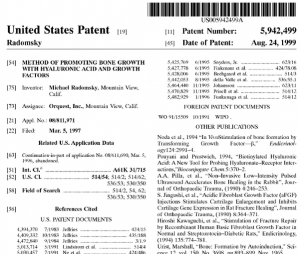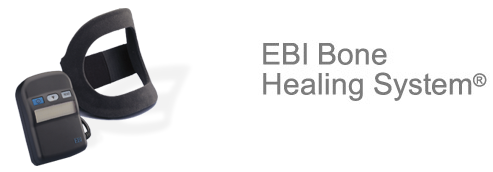For a long time, I have noticed that one type of Traditional Chinese or Oriental Medicinal plant or supplement keeps appearing over and over again as a possible height increase or grow taller miracle herb. The name of it translated into English is “Tian Qi”.
From what is written about it on websites which young Chinese and Korean people who are internet savy congregate, it seems that this magical herb has this trait to make at least young children taller. This suggest that the herb may have some real possibilities. In my research, I have found at least 3-4 elements or compounds which a person could take orally which has some slight affect in increasing the endochondral ossification process of young children.
From a webpage that catalogs traditional chinese herbs used for medicinal applications HERE there is a very small section and real information about the plant…
Pseudo Ginseng ( Tian Qi ) 田七 Chinese Herbs Articles
Pseudo Ginseng ( Tian Qi ) 田七 Chinese Herbs Articles, also known as tian san qi 田三七, jin bu huan 金不換, han san qi 旱三七, tian qi 田七, shen san qi 參三七. It belong to the “” family.
Pseudo Ginseng ( Tian Qi ) 田七 sweet, slightly bitter and warm properties. It is use for treating the liver, stomach and large intestine.

Pseudo Ginseng ( Tian Qi ) 田七 Medical Function:
1. Stop bleeding and anticoagulation: anticoagulation of platelets, promotes dissolving of fibrinogens.
2. Anti-inflammation.
3. Relieving pain.
4. Calming.
5. Enhances the effects of adrenocortical hormone: regulate the metabolism of sugar.
6. Protects liver.
7. Anti cancer.
8. Improve capillary circulation: anti fatigue.
9. Anti aging.
10. Arrest bleeding (active chemical:dencichine, there is more of that in raw tian qi ).
Pseudo Ginseng ( Tian Qi ) 田七 Cautions Use:
Allergic reaction: face and eyes becomes red and swollen. Numbness in the limbs, dizziness, heaviness in the chest, palpitation, sweating, nausea, arrhythmia.
From another website NaturalNews.com…
(NaturalNews) Chinese Tien Qi root (Panax Pseudo-Ginseng) in a raw fine powdered form is carried by most Asian soldiers as standard military issue. It is carried in a small bottle for pouring into an open wound or for taking internally if necessary.
The reason this is standard issue is its amazing ability to “re-direct” the blood from an open wound and even helps push or “float” metal objects to the surface. It can literally help stop bleeding without necessarily clotting. However, it can aid in clotting if it is necessary. It’s almost as if it has a mind of its own. The Chinese say it “disciplines the blood”; also when taken internally, it can really speed up the healing time of wounds, broken bones, or most any tissue damage.
Tien Qi powder is taken internally for many reasons such as healing from an operation, wounds, internal bleeding and broken bones. This is 100% applicable to female problems of severe menstrual bleeding. Tien Qi is used commonly by Chinese women for this. It is very effective.
About ¼ to ½ teaspoon of the powder dissolved in hot water or tea is taken 2-3 times a day for internal use. I have always noticed a nice warm energy coming from the stomach area and found that when I take it, I am very alert and more focused than usual. Most likely due to the “discipline of the blood” around the brain area.
Tien Qi (Main herb) is also used in a very famous Chinese liniment called Zhang Gu Shui to facilitate healing of broken bones and sprains due to its ability to disperse blood from an injury. It will stop bruises and other hematoma quickly by this dispersion. The exact formula is “kept secret” but everyone knows that it is Tien Qi in a menthol-camphor base. (The Menthol Camphor helps carry the herb deep into the tissue.)
I used to practice the marshal art (Kung Fu) and there was always a bottle of Zhang Gu Shui around at all tournaments in case someone was injured. I have heard countless stories of major Karate tournaments in China where someone’s leg had been broken fighting so they wrapped the leg, putting cotton balls soaked in Zheng Gu Shui under the wrap and sent him back to fight! (and he won)
When I had my small herbal clinic, there were many doctors and nurses that would stop by and get a bottle of Zheng Gu Shui from me because they had seen how fast it speeded the healing of broken bones and sprains.
You will began to get a glimpse of this amazing herb’s healing abilities after you read the following three examples, and I am sure you will understand why I am so impressed by it. The reason I say this is because oddly enough, these three following “case histories” had nothing to do with any of my patients but had everything to do with me and my own stupid misfortunes! And I swear to you! Nothing is made up here (I wish it was), I only hope I don’t get the “privilege” of having any more reasons to “brag” about the amazing healing powers of this herb.
From another internet source, Before It’s News of an article entitled “Chinese Herbs In Western View – San Qi Or Tian Qi (Radix Pseudoginseng) Health Benefits And Side Effects”
San Qi is also known as pseudoginseng root. The sweet, slight bitter and warm herb has been used in TCM as anticoagulation, Anti-inflammation, anti cancers and anti aging agent and to lower cholesterol, stop bleeding, improve capillary circulation, etc., as it eliminates Blood accumulation, stops bleeding, Moves Blood, calms pain, etc. by enhancing the functions of liver, stomach and large intestine channels.
Ingredients
1. Ginsenoside
2. Gamma-muurolene
3. Cyperene
4. Alpha-elemene
5. Gammma-cadinene
6. Delta-cadinene
7. Alpha-gurjunene
8. Alpha-guaiene
9. Alpha-copaene
10. Beta-cuabebene PN and EPGF can promote VEC proliferation, migration, DNA synthesis and VEGF mRNA expression. The results suggest that they have a certain effect on the genesis and development of new vessels in the ischemic myocardium.
11. Caryophyllene
12. Delta-guaiene
13. Alpha-cedrene
14. Etc.
Health Benefits
1. HUVEC proliferation and secretion of VEGF
In the study to evaluate the effects of Radix Ginseng and Radix Notoginseng formula on secretion of vascular endothelial growth factor (VEGF) and expression of vascular endothelial growth factor receptor-2 (VEGFR-2) in human umbilical vein endothelial cells (HUVECs) in vitro, indicated that RadixGinseng and Radix Notoginseng formula can promote HUVEC proliferation and secretion of VEGF, as well as the expression of VEGFR-2 protein, which may be one of the mechanisms of Radix Ginseng and RadixNotoginseng formula in promoting angiogenesis(1).
2. Vascular endothelial cell proliferation and migration
In the study to investigate the effects of extracts from Panax notoginseng (EPN) and Panax ginseng fruit (EPGF) on the proliferation and migration of human umbilical vein endothelial cells (HUVECs) in vitro, showed that PN and EPGF can promote VEC proliferation, migration, DNA synthesis and VEGF mRNA expression. The results suggest that they have a certain effect on the genesis and development of new vessels in the ischemic myocardium(2).
3. Angiogenic effect
In the study to obser the angiogenic effects of PNS on human umbilical vein endothelial cells (HUVECs) in vitro and zebrafish in vivo, found that PNS can promote angiogenesis, and that the proangiogenic effects involve the VEGF-KDR/Flk-1 and PI3K-Akt-eNOS signaling pathways(3).
4. Renal interstitial fibrosis
In the study to investigate the effects of compound Radix Notoginseng (RN) on renal interstitial fibrosis and kidney-targeting treatment, the result indicated that RN and compound Radix Notoginseng(CRN) can inhibit UUO-induced renal interstitial fibrosis in rats, and CRN treatment is more effective than RN in reducing interstitial fibrosis(4).
5. Herpes simplex virus
In the study of Notoginsenoside ST-4 inhibits virus penetration of herpes simplex virus in vitro, researchers found that analyzed by attachment assay and penetration assay based on plaque reduction assay, the antiviral activity of notoginsenoside ST-4 was principally due to the penetration inhibition effects, which was confirmed by fluorescence microscopy observation that notoginsenoside ST-4 blocked the penetration of virus. Therefore, notoginsenoside ST-4 might be a promising agent for herpes simplex virus infection(5).
6. Ischemic stroke
With the aim to investigate the synergistic action of low dose of aspirin combined with sanchitongshu capsule in the treatment of patients with light and moderate ischemic stroke in acute and subacute stages, with participants assigned either to receive aspirin (50mg per day) and sanchitongshu capsule (200mg three times a day) or aspirin (50mg per day) and placebo capsule, showed that low dose of aspirin combined with sanchitongshu capsule significantly ameliorated neurological deficit (increased score of ESS: t=-5.02, p<0.0001) and activities of daily living (increased score of BI: t=-2.4, p=0.0178) after treatment compared with aspirin alone. Adverse reaction which occurred equally in both arms, was light to moderate and disappeared without special treatment. Sanchitongshu capsule, as a complementary medicine to aspirin, was effective in improving outcomes after ischemic stroke. It was a safe drug in our trial(6).
7. Etc.
Side Effects
1. the herb may cause allergic effects
2. Do not use the herb in newborn, children or if you are pregnant or breast feeding without first consulting with the related field specialist.
3. Etc.
Analysis & Interpretation:
What really surprised me about the last source is that the article seems to have been written using articles and studies one finds from PubMed. There is around 5 cited reference articles which I will post below…
Sources
(1) http://www.ncbi.nlm.nih.gov/pubmed/20388479
(2) http://www.ncbi.nlm.nih.gov/pubmed/18568327
(3) http://www.ncbi.nlm.nih.gov/pubmed/19107746
(4) http://www.ncbi.nlm.nih.gov/pubmed/22455126
(5) http://www.ncbi.nlm.nih.gov/pubmed/21623512
So the question to ask then is, what should we make out of it?
Does Tian Qi which does seem to have a lot of medical benefits have any sound scientifc basis on why it would make children who are still growing taller?
From this website HERE I would like to quote the last sentence on this unique plant…
“When children exhibit slow growth, Notoginseng may be used to speed up the growth process.”
Notoginseng, also referred to as Panax pseudoginseng, belongs to the same genus as Chinese Ginseng, Panax. Notoginseng or Pseudoginseng is usually found in China and Japan,
Notoginseng is also known as SānQì (three-seven) in Chinese, because it is believed that the best Notoginseng should be harvested between three and seven years. Notoginseng that is harvested earlier or later than that will not be as efficacious, particularly in its haemostatic action.
Because of Notoginseng’s ability to help improve Blood stasis, reduce swelling and pain, and ease bleeding, it is considered an important herb in TCM, and is widely believed to help treat traumatic injuries, various kinds of bleeding, and used in many emergencies. Notoginseng is also dubbed as Jīnbúhuàn, which is translated to mean “cannot be exchanged for gold” because of its precious medicinal value. In fact, the famous anti-inflammation and pain formula Pìanzihuáng includes Notoginseng as a main ingredient.
As one of the earliest herbs ever researched on, Notoginseng has been proven scientifically to be effective in assisting the treatment of Heart diseases, particularly with regards to the narrowing of arteries. It is also effective in managing cholesterol and fat levels.
Analysis & Interpretation:
What is repeated over and over again is the idea that this medicine will…
“…it activates the circulation of Blood and Qi, and helps to restore energy. It also nourishes the Blood and promotes metabolism in the elderly and the weak”
There seems to be another type of traditional chinese medicine which has been claimed by Chinese natives known as HUA SHEN GEN (chinese soup) which is supposed to help increase the growth process and make still growing teenagers taller than if they didn’t use the herb.
What the websites at least on the internet keeps on saying is that this plant which is similar to ginseng has a host of useful properties. It is supposed to help treat or prevent inflammation, infections, cancers, and a host of other chronic problems.
The two things that would be important for our research is that this Traditional Chinese Medicine herb (TCM herb) can…
- Make blood flow out of the human body stop
- Make bones that are broken heal
Traditional Chinese Medicine uses the idea of Chi to explain body function and processes. I don’t want to use that type fo pseudoscience to validate why this herb could possibly work. Since it has been used even in Martial Arts tournaments to stop bleeding and such, there is probably something of an active ingredient found in the Tian Qi which does have some properties. The practitioners of TCM say that the herb can stop bleeding by redirectly blood flow away from the wound where the blood is coming from.
There is a chinese liniment named Zhang Gu Shui which has two parts, the Tian Qi and a base of menthol camphor. The menthol camphor is guessed to be the active ingredient to get the Tian Qi ingredient further down into the human body for effect. It seems that from the few PubMed studies which were cited in the 3rd article pasted above, the Tian Qi has growth factor increasing or stimulating properties. It can increase the VEGF from HUVEC which is basically multipotent stem cells. The HUVEC increase proliferation means that it might be possible to get cells in blood which is being released after a wound to rapidly differentiate skin tissue or blood vessel tissue to develop and redirect any possible lost blood back into the system.
As for our desire to grow taller, since there is evidence from studies from PubMed that show that the pseudo-ginseng can it can help increase the proliferation of stem cells, this can have definite possibilites on how the chondrocytes in the resting zone of the growth plates will end up.


 Avi Feb 24 2010 Status: New idea
Avi Feb 24 2010 Status: New idea


